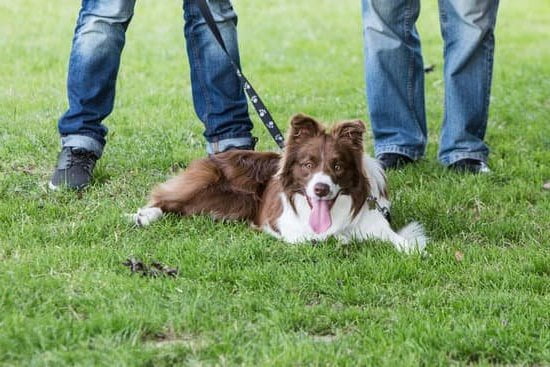Are you considering dog crate training for your furry companion? Dog crate training is a popular and effective method for teaching your dog boundaries, providing them with a safe space, and helping them develop good behaviors.
In this comprehensive guide, we will cover everything you need to know about dog crate training, from the benefits of crate training to choosing the right crate for your dog. Whether you have a new puppy or are looking to improve your adult dog’s behavior, crate training can be a valuable tool in your pet parenting arsenal.
The process of crate training can seem daunting at first, but with the proper guidance and understanding of the principles involved, it can be a smooth and positive experience for both you and your dog. By using positive reinforcement techniques and taking into account your dog’s individual needs and challenges, crate training can lead to long-term success in fostering good behavior.
In this article, we will delve into the dos and don’ts of crate training, ways to acclimate your dog to the crate, common challenges you may encounter, and how to overcome them.
Whether you’re a first-time pet owner or looking to refresh your knowledge on crate training, there’s something for everyone in this guide. From troubleshooting common issues in dog crate training to gradually increasing crate time for your dog’s comfort and success, we’ve got you covered. So let’s dive in and explore the world of dog crate training together.
Benefits of Crate Training for Dogs
Crate training is a valuable tool for dog owners, offering numerous benefits for both the pet and the owner. One of the primary advantages of crate training is that it provides a safe and secure space for your dog. This can be especially beneficial when you are unable to supervise your pet, as it prevents them from getting into potentially dangerous situations.
Additionally, crate training can help with housebreaking and managing separation anxiety in dogs. When used correctly, a crate can become a calming and positive space for your pet.
Another benefit of crate training is that it can assist in preventing destructive behavior. Many dogs chew on furniture, shoes, or other items when left alone, but a well-trained dog will see their crate as their sanctuary. By providing them with a comfortable environment in their crate, you are lessening the likelihood of them causing damage while you are away.
Using a dog crate during car travel can also make transportation safer and more comfortable for your pet. It prevents distraction while driving and reduces the chances of injury during sudden stops or turns. Many dogs also feel more at ease knowing they have their own space within the vehicle.
Overall, understanding the benefits of dog crate training is essential for implementing this method effectively. When used correctly, it positively impacts both the behavior and well-being of your furry companion.
| Benefit | Description |
|---|---|
| Safe and secure space | Crate provides a secure environment when unsupervised |
| Preventing destructive behavior | A well-trained dog will see their crate as their sanctuary |
| Safer travel | Crate helps keep dogs calm and prevents distractions during car travel |
Choosing the Right Crate for Your Dog
When it comes to dog crate training, choosing the right crate for your dog is essential for their comfort and success in the training process. There are a few key factors to consider when selecting a crate for your furry friend.
First and foremost, you’ll want to choose a crate that is the appropriate size for your dog. The crate should be large enough for your dog to stand up, turn around, and lie down comfortably, but not so large that they have ample room to use one corner as a bathroom area. If you have a puppy, keep in mind that they will grow, so you may need to purchase a larger crate as they mature.
In addition to size, consider the material of the crate. Some dogs may feel more secure in a plastic or fabric-covered crate, while others may prefer the visibility and airflow of a wire crate. It’s also important to choose a crate with sturdy construction and secure latches to ensure your dog’s safety while inside.
Lastly, think about where you’ll be using the crate. If you plan to travel with your dog or use the crate outdoors, portability and weather resistance may be important factors in your decision.
| Factors | Considerations |
|---|---|
| Size | The appropriate size for comfort and potty training |
| Material | Dog’s preference and security measures |
| Usage | Indoor vs outdoor/ travel considerations |
By carefully considering these factors and taking your dog’s individual needs into account, you can choose a crate that will serve as a safe and comfortable space for them during their training journey.
Getting Your Dog Acclimated to the Crate
Introducing the Crate
When introducing the crate to your dog, it’s important to make it a positive experience. Place the crate in a common area of your home where your dog spends most of their time, and leave the door open so they can explore it at their own pace. You can entice them with treats or toys to encourage them to go inside.
Creating a Positive Association
You can start by feeding your dog their meals near or inside the crate to create a positive association with it. Gradually move their food bowl further into the crate until they are comfortable eating inside. You can also place comfortable bedding and familiar toys inside the crate to make it more inviting for your dog.
Gradual Enclosure
Once your dog is comfortable going in and out of the crate, you can start closing the door for short periods while you are nearby. Gradually increase the amount of time that they spend inside with the door closed, always making sure to praise and reward them for calm behavior. This will help them become accustomed to being enclosed in the crate without feeling anxious or stressed.
By following these steps and being patient with your dog, you can help them get acclimated to the crate in a positive way. Remember that every dog is different, so it’s important to tailor your approach based on their individual needs and temperament when it comes to dog crate training.
Crate Training Dos and Don’ts
Crate training can be a very effective tool for teaching your dog good behaviors and providing them with a safe space of their own. However, there are some important dos and don’ts to keep in mind when implementing this training method.
One of the most important “dos” of crate training is to make the crate a positive and comfortable environment for your dog. This means providing them with soft bedding, toys, and treats to help them associate the crate with positive experiences. It’s also important to start out slowly and gradually increase the amount of time your dog spends in the crate, making sure they feel safe and secure throughout the process.
On the other hand, there are definite “don’ts” when it comes to crate training. It’s essential not to use the crate as a form of punishment for your dog. The crate should never be used as a place of fear or isolation for your pet. Additionally, it’s crucial not to leave your dog in their crate for extended periods of time, especially without any form of mental stimulation or exercise beforehand.
Another important “do” in crate training is to supervise your dog while they are in their crate, especially during the initial stages of acclimation. This allows you to address any issues or concerns that may arise and ensures that your dog remains safe and comfortable during their time in the crate.
By following these dos and don’ts of crate training, you can help ensure that your dog has a positive experience with their crate and develops good behaviors as a result. With patience, consistency, and positive reinforcement techniques, you can successfully train your dog to view their crate as a safe haven rather than a source of stress or anxiety.
Using Positive Reinforcement in Crate Training
When it comes to dog crate training, positive reinforcement is a key element in helping your dog acclimate to their crate and feel comfortable spending time in it. By using positive reinforcement techniques, you can create a positive association with the crate and make it a place where your dog feels safe and secure.
Here are some ways you can use positive reinforcement in crate training:
- Use treats: When introducing your dog to the crate, use treats to lure them inside and reward them for going in. Gradually increase the time they spend inside the crate before giving them a treat, reinforcing the idea that staying in the crate is a positive experience.
- Verbal praise: Whenever your dog enters the crate on their own or stays inside calmly, be sure to offer verbal praise and encouragement. This will help them understand that being in the crate is something they should feel good about.
- Comfort items: Place your dog’s favorite toy or blanket inside the crate to make it a more inviting space. This will help them associate the crate with things they love and enjoy.
It’s important to remember that patience is key when using positive reinforcement in crate training. It may take time for your dog to become fully comfortable with the crate, so be consistent with your praise and rewards. With time and practice, most dogs can learn to see their crates as safe havens rather than places of confinement.
By utilizing positive reinforcement techniques, you can make your dog’s experience with their crate a pleasant one, leading to successful crate training and ensuring that they have a comfortable place of their own within your home.
Common Challenges in Crate Training and How to Overcome Them
Crate training your dog can be a very effective method for teaching them good behavior and providing them with a safe and comfortable space. However, there are some common challenges that dog owners may face when crate training their pets. Here are some of these challenges and how to overcome them:
1. Separation anxiety: Some dogs may experience separation anxiety when placed in a crate, especially if they are not used to being alone. This can lead to excessive barking, whining, or even attempts to escape from the crate.
To overcome separation anxiety during crate training, it’s important to gradually accustom your dog to being left alone in the crate. Start by leaving them in the crate for short periods of time while you are still at home, and then gradually increase the duration as they become more comfortable.
2. Fear of the crate: If your dog shows signs of fear or reluctance towards their crate, such as cowering or refusal to enter the crate, it’s important to address this issue before proceeding with crate training.
One way to overcome this challenge is by making the crate a positive and inviting space for your dog. You can do this by placing treats and toys inside the crate and encouraging your dog to enter voluntarily without closing the door at first.
3. Accidents inside the crate: Accidents inside the crate can be a common challenge during dog crate training, especially for puppies who are still learning bladder control. To overcome this challenge, it’s crucial to set up a proper potty-training routine and ensure that your dog has regular bathroom breaks before being placed in the crate. Additionally, choosing an appropriately sized crate can help discourage accidents as dogs typically avoid soiling their sleeping area.
Successfully overcoming these common challenges in dog crate training requires patience, consistency, and positive reinforcement techniques. By addressing these issues thoughtfully and compassionately, you can help your dog feel comfortable and secure in their crate while establishing good behavior habits.
Gradually Increasing Crate Time for Your Dog’s Comfort and Success
Starting Slow and Gradual
When it comes to crate training your dog, it’s important to remember that Rome wasn’t built in a day. Gradually increasing crate time for your dog’s comfort and success is key to a successful training experience. Start with short periods of time in the crate, only a few minutes at a time, and gradually increase the duration as your dog becomes more comfortable.
Using Positive Reinforcement
As you work on increasing the amount of time your dog spends in the crate, be sure to use positive reinforcement techniques. Offer treats and praise when your dog enters the crate willingly, and make sure to create a positive association with the crate. This will help your dog feel more comfortable and at ease when spending longer periods of time inside.
Monitoring Your Dog’s Comfort Level
Pay close attention to your dog’s behavior while they are in the crate. If you notice signs of distress or anxiety, take a step back and decrease the amount of time they spend inside. It’s important to prioritize your dog’s comfort and well-being throughout this process. Slowly but surely, you can work towards longer periods of crate time without causing undue stress for your furry friend.
By taking things slow, using positive reinforcement, and closely monitoring your dog’s comfort level, you can gradually increase crate time for your dog’s comfort and success. Remember that every dog is different, so be patient and attentive as you navigate this aspect of their training.
Troubleshooting Common Issues in Dog Crate Training
Dog crate training, like any form of training, can come with its challenges. Common issues that pet owners may encounter when crate training their dogs include whining, barking, and crying from the dog while they are in the crate, as well as resistance or fear of entering the crate.
One common issue is separation anxiety, where a dog becomes stressed or anxious when left alone in the crate. This can manifest as excessive barking or whining and can be distressing for both the dog and the owner. To address this, it’s important to gradually build up the amount of time your dog spends in the crate alone, starting with short increments and gradually increasing them over time.
Another common challenge is resistance to entering the crate. Some dogs may be fearful of crates or may have had negative experiences with them in the past. To overcome this issue, it’s important to make the crate a positive and welcoming space for your dog. You can do this by using treats or toys to encourage your dog to enter the crate on their own and associating it with positive experiences.
In addition, some dogs may exhibit destructive behavior when in their crates, such as chewing on the bars or attempting to escape. This behavior can be a sign of stress or discomfort, so it’s essential to ensure that your dog’s crate is appropriately sized and comfortable for them. Providing mental stimulation through toys and ensuring that your dog gets enough exercise outside of their crate can also help alleviate boredom and reduce destructive behaviors.
Crate Training for Puppies vs Adult Dogs
In conclusion, dog crate training can be an effective and humane way to teach your furry friend proper behavior and offer them a safe and comfortable space of their own. Whether you are beginning with a puppy or an adult dog, the benefits of crate training are numerous. From aiding in potty training to providing a secure environment for your pet when you are away, crate training can positively impact your dog’s well-being and your peace of mind.
When it comes to choosing the right crate for your dog, it is essential to consider their size, behavior, and comfort. Getting them acclimated to the crate should be done gradually and with patience, using positive reinforcement techniques. Both puppies and adult dogs may face challenges with crate training, but these can be overcome with consistency and understanding.
As you embark on this journey of dog crate training, remember that every dog is unique and may require individualized approaches. Troubleshooting common issues such as whining or resistance to entering the crate is part of the process, but with dedication and guidance, you can help your pet adjust comfortably.
Whether you are working with a playful puppy or a mature adult dog, the principles of crate training remain similar – creating a positive association with the crate and gradually increasing their time spent in it. With dedication and consistent effort, both puppies and adult dogs can benefit from the structure and security that comes with proper crate training techniques.
Frequently Asked Questions
Should I Crate My Dog at Night?
Whether or not to crate your dog at night depends on your individual pet and their behavior. Crating can provide a sense of security for some dogs, while others may find it stressful. It’s important to observe your dog’s behavior and consult with a professional if needed.
How Long Does It Take for a Dog to Get Used to Crate Training?
The time it takes for a dog to get used to crate training varies from dog to dog. Some adapt quickly within a few days, while others may take longer. Consistent training, positive reinforcement, and patience are key in helping your dog adjust to their crate.
At What Age Is It Too Late to Crate Train a Dog?
It is never too late to crate train a dog. While younger puppies may be easier to train, older dogs can still learn to feel comfortable in a crate with the right approach. It’s important to introduce the crate gradually and create positive associations with it for the best results.

Welcome to the blog! I am a professional dog trainer and have been working with dogs for many years. In this blog, I will be discussing various topics related to dog training, including tips, tricks, and advice. I hope you find this information helpful and informative. Thanks for reading!





